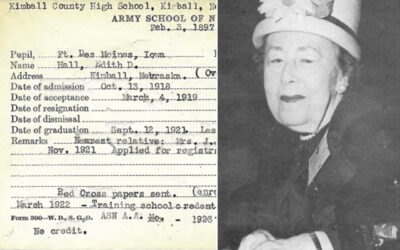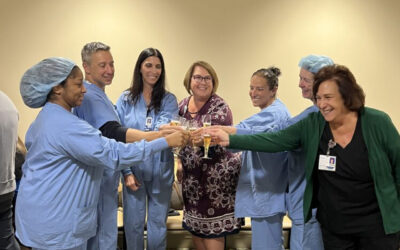As the medical profession only grows more increasingly technologically complicated, those clinicians with a background in computing, information technology, or other digital expertise are ever more valuable in the workplace. That holds true especially in the field of nursing, where informaticists like Aric Campling are helping bridge needs of staff in both the clinical and IT departments with a diverse set of skills that extends from caregiving to programming.
Campling entered the field as a cardiac care telemetry nurse. After a number of years, he’d worked in ICU step-down units, open-heart surgery recovery units, and catheterization labs. When Bethesda Memorial Hospital of Boynton Beach, Florida, began implementing a bar code medication administration project as part of its electronic medical record (EMR) system, Campling was selected to become a program super-user. His job was to adopt the software first to alleviate the burden on the IT staff of teaching everyone else in his unit, and then help his peers learn to navigate the system. Over the course of that implementation, a nurse in the IT department took an interest in him, won over by Campling’s digital abilities, and invited him to cross over into their department.
“I’d had a particularly terrible day in the nursing unit, which doesn’t happen often, but when it does, (it) leaves you vulnerable to poaching from the IT department,” Campling said. “I was aiming for a career in nursing informatics, and I stumbled into it a few years early.”
Self-taught in computing, Campling studied under Virginia Saba during his undergraduate nursing career at Georgetown. Saba was at the forefront of the development of the nursing informatics specialty in the late 1990s.
“I thought, ‘I could do this; I’ll get some bedside experience, [and] I’ll go back to school,’ ” Campling said. “Rather than going back to school, I ended up being hired into it, and working as an informaticist for a few years.”
Campling considered completing more formal schooling in informatics, but after talking it over with a colleague, decided it was better for him to keep working in the field and working out fundamental theories from textbooks instead. Working in nursing informatics while still having the knowledge base of a cardiac care nurse which is “generally portable and serves a variety of purposes,” unites his clinical experiences, technical language, and workflow understanding in the clinical environment, Campling said.
“Even if an EMR user calls in and needs support because there’s an issue with the system, I can understand the language that they’re speaking, somewhat uniquely the workflows and the issues that they’re facing, and the urgency of a request that comes in, and be able to help understand from a clinical standpoint what they’re facing,” he said.
It also earns him the trust and respect of IT experts who Campling said are “steeped in the clinical tradition.”
“Sometimes clinicians will sort of wave their hands and turn their noses up at IT folks because they don’t come from a traditional IT background,” he said. “It helps grease the wheels because we’re all speaking the same language.”
On the flip side, the barriers between the clinical and IT worlds are shrinking, Campling said. Programmers who’ve never worked in clinical settings may not have an easy time establishing relationships with health care workers, but with informaticist translating between the IT and the clinical sides of things, “that all comes together,” he said.
“It was a bit of an uphill battle in the ’90s and the 2000s, getting health care organizations to recognize that technology was the way of the future, but it’s much more recognized now to the extent that meaningful use money worked to benefit providers and patients,” Campling said. “Sooner or later everybody’s going to have to do it, especially if they receive Medicare and Medicaid funding. Not only is it an interesting field to be in, it’s one that increasingly has good job security.”
Currently, Campling works as an Integration Architect at the Bear Institute, a partnership between Cerner and the Children’s National Health System in Silver Springs, Maryland. His role involves bringing innovation and support to a larger set of operational responsibilities. Recently, he’s been working on a major version upgrade for the Cerner EMR that requires unifying the responsibilities he’s developed in the IT and clinical worlds.
“I have a high-level view of the way that various systems work together, or are supposed to,” Campling said. “From a clinical background, all the different systems work together, and we’re supposed to make sure they’re doing so. We have a good team of application experts here, and sometimes they need additional support. I can help them out with application solutions, trying to understand the issues that are going on so that we can get information for the end users.”
When he’s not in the office, Campling stretches out the remainder of his quite versatile set of talents. His interest in illustration and comics production led to his creation of a webcomic he’s maintained since 1999; Campling has also published a short story in a comics anthology that was released this January, and is working on another for Square City Comics. He’s a black belt in Shaolin Wushu-Kung Fu and last year began studying Tai Chi. Swing dancing is another of his hobbies (since marrying a swing dance instructor, learning was “mandatory,” he said). In the rare moments when he takes a break, Campling can be found curled up with a book, a video game or taking in some sun in his garden.











